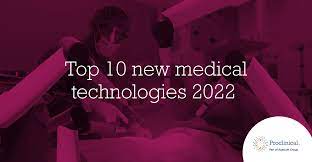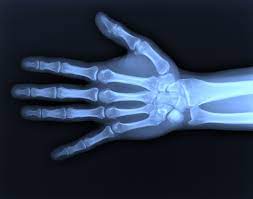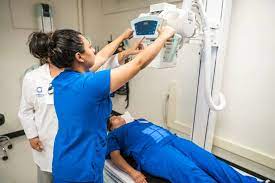
Exploring the Evolving Landscape of Medical Imaging Technology
The Advancements in Medical Imaging Technology
Medical imaging technology has revolutionized the field of healthcare, allowing healthcare professionals to visualize and diagnose various medical conditions with unprecedented accuracy and detail. Over the years, significant advancements in medical imaging technology have greatly enhanced patient care and treatment outcomes.
One of the most widely used imaging modalities is X-ray technology, which provides detailed images of bones and internal organs. X-rays have been instrumental in diagnosing fractures, lung infections, and other conditions quickly and non-invasively.
Another crucial imaging technique is computed tomography (CT) scanning, which combines X-ray images taken from different angles to create detailed cross-sectional images of the body. CT scans are invaluable in detecting tumors, internal bleeding, and other abnormalities that may not be visible on traditional X-rays.
Magnetic resonance imaging (MRI) technology utilizes powerful magnets and radio waves to generate detailed images of soft tissues, organs, and blood vessels. MRI scans are essential for diagnosing conditions such as brain tumors, spinal cord injuries, and joint abnormalities.
Ultrasound imaging is a non-invasive technique that uses high-frequency sound waves to produce real-time images of internal structures. Ultrasounds are commonly used during pregnancy to monitor fetal development but are also valuable for assessing heart function, detecting gallstones, and guiding biopsies.
Nuclear medicine imaging involves the use of radioactive tracers to visualize organ function and detect diseases at a molecular level. Positron emission tomography (PET) scans can pinpoint metabolic activity in tissues, aiding in the early detection of cancer and monitoring treatment response.
Advancements in medical imaging technology continue to push the boundaries of what is possible in healthcare. Innovations such as 3D mammography, digital radiography, and artificial intelligence-driven image analysis are transforming how medical professionals diagnose and treat patients.
As medical imaging technology evolves, it holds the promise of earlier disease detection, more precise treatment planning, and improved patient outcomes. The ongoing development of cutting-edge imaging techniques underscores the critical role that technology plays in modern healthcare practices.
8 Essential Tips for Excellence in Medical Imaging Technology: Accuracy, Safety, and Professional Development
- Ensure proper positioning of the patient for accurate imaging results.
- Follow safety protocols to protect both patients and healthcare professionals from radiation exposure.
- Regularly calibrate and maintain imaging equipment to ensure optimal performance.
- Stay updated with the latest advancements in medical imaging technology for improved diagnosis and treatment.
- Communicate effectively with patients to explain procedures and alleviate any concerns they may have.
- Collaborate with radiologists and other healthcare professionals to interpret imaging results accurately.
- Adhere to ethical guidelines and patient confidentiality when handling medical imaging data.
- Continuously enhance your skills through training programs and professional development opportunities.
Ensure proper positioning of the patient for accurate imaging results.
Ensuring the proper positioning of the patient is essential in obtaining accurate imaging results in medical imaging technology. Correct positioning not only helps capture clear and detailed images but also minimizes the risk of misdiagnosis or overlooking important findings. By following precise positioning protocols, healthcare professionals can optimize the quality of images, leading to more effective interpretation and diagnosis. Proper patient positioning is a fundamental aspect of medical imaging that significantly impacts the overall quality and reliability of diagnostic information obtained through various imaging modalities.
Follow safety protocols to protect both patients and healthcare professionals from radiation exposure.
It is crucial to follow safety protocols in medical imaging technology to safeguard both patients and healthcare professionals from radiation exposure. Adhering to established guidelines ensures that the benefits of diagnostic imaging outweigh the potential risks associated with radiation. By implementing proper safety measures, such as using lead aprons and shields, limiting radiation exposure time, and maintaining equipment properly calibrated, healthcare facilities can minimize the risk of harmful effects while maximizing the effectiveness of imaging procedures. Prioritizing safety protocols in medical imaging not only protects individuals from unnecessary radiation exposure but also upholds standards of care and professionalism within the healthcare industry.
Regularly calibrate and maintain imaging equipment to ensure optimal performance.
It is essential to regularly calibrate and maintain medical imaging equipment to guarantee optimal performance and accurate diagnostic results. Proper calibration helps ensure that the imaging equipment functions correctly and produces high-quality images, allowing healthcare professionals to make precise diagnoses and provide effective treatment plans. Regular maintenance also extends the lifespan of the equipment, reducing the risk of malfunctions and downtime, ultimately benefiting both healthcare providers and patients by ensuring reliable and efficient imaging services.
Stay updated with the latest advancements in medical imaging technology for improved diagnosis and treatment.
Staying updated with the latest advancements in medical imaging technology is crucial for enhancing the accuracy and effectiveness of diagnosis and treatment in healthcare. By staying informed about new imaging techniques, software upgrades, and equipment developments, healthcare professionals can provide patients with more precise diagnoses, personalized treatment plans, and better overall care. Keeping abreast of innovations in medical imaging technology ensures that patients receive the most advanced and efficient diagnostic services available, leading to improved health outcomes and enhanced patient satisfaction.
Communicate effectively with patients to explain procedures and alleviate any concerns they may have.
Effective communication with patients is crucial when it comes to medical imaging technology. It is essential to explain procedures clearly and in a way that patients can understand, addressing any concerns or fears they may have. By fostering open and transparent communication, healthcare professionals can help alleviate patient anxiety, build trust, and ensure cooperation during imaging procedures. Taking the time to listen to patients’ questions and providing reassurance can make a significant difference in their overall experience and contribute to better outcomes in their healthcare journey.
Collaborate with radiologists and other healthcare professionals to interpret imaging results accurately.
Collaborating with radiologists and other healthcare professionals is crucial for accurately interpreting imaging results in the field of medical imaging technology. Radiologists possess specialized training and expertise in analyzing medical images, allowing them to provide valuable insights and diagnoses based on the imaging findings. By working together with radiologists and other healthcare professionals, such as oncologists or surgeons, a comprehensive understanding of the imaging results can be achieved, leading to more informed treatment decisions and improved patient care outcomes. Effective collaboration ensures that all relevant clinical information is considered, enhancing the accuracy and reliability of the diagnostic process in medical imaging.
Adhere to ethical guidelines and patient confidentiality when handling medical imaging data.
It is paramount to adhere to ethical guidelines and maintain patient confidentiality when handling medical imaging data. Medical imaging technology provides sensitive information about an individual’s health, and it is crucial to respect patient privacy and protect their personal data. By following ethical standards and safeguarding patient confidentiality, healthcare professionals can ensure trust, respect, and integrity in the handling of medical imaging data, ultimately upholding the highest standards of care and professionalism in the healthcare field.
Continuously enhance your skills through training programs and professional development opportunities.
To stay abreast of the latest advancements in medical imaging technology, it is essential to continuously enhance your skills through training programs and professional development opportunities. By participating in ongoing education and training initiatives, healthcare professionals can deepen their understanding of new imaging techniques, equipment, and software. These programs not only help individuals stay current with industry trends but also enable them to provide the highest quality of care to patients by utilizing cutting-edge technology effectively. Investing in professional development ensures that healthcare professionals remain competent and knowledgeable in the dynamic field of medical imaging technology.



